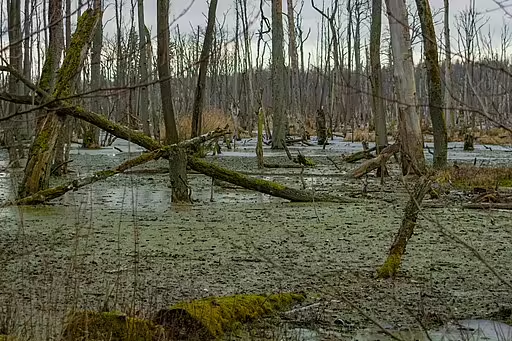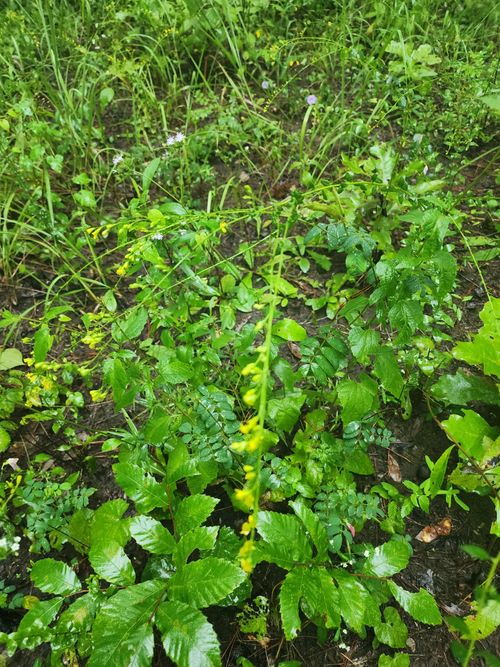Table of Contents for Hobblebush (Viburnum lantanoides)
Hobblebush (Viburnum lantanoides) is a herbaceous perennial that is native to the eastern United States and Canada. This species is a host to the holly blue (Celastrina argiolus), Spring Azure (Celastrina ladon), Henry’s elfin (Incisalia henrici) and the Baltimore checkerspot (Euphydryas phaeton). Growing from 3 feet to 10 feet tall, this species grows in moist rich woods, streambanks, and swamps. The white to pink flowers bloom from May to June and the plant is hardy in zones 3-6.
Taxonomy and Naming of Hobblebush (Viburnum lantanoides)

Taxonomy
Hobblebush (Viburnum lantanoides) was originally named and described by Andre Michaux, a French botanist in 1803 based on a specimen in Canada (Uttal 1984). This species was also described in part by Humphry Marshall, an American botanist, in 1785. It has kept this same name since and is a member of the Muskroot Family (Adoxaceae).
Meaning of the Scientific and Common Names
Scientific Name
The genus name, Viburnum, derives from the Latin word for obscure. The species name, lantanoides, is a Latin name for Viburnum.
Common Name and Alternative Names
The common name comes from the plant hobbling people. Other commons names include witch-hobble, alder-leaved viburnum, American wayfaring tree, and moosewood.
Physical Description

- Plant Type: This plant is a shrub.
- Height: 3 ft (0.9 m) to 10 ft (3 m)
- Stem: The stems are erect with gray-brown bark.
- Leaves: The leaves are simple, opposite, cordate to ovate, and have serrate margins. They are 4 in (10 cm) to 10 in (25 cm) long and 3 in (8 cm) to 8 in (20 cm) wide (Weakley 2022).
- Flower color: white to pink
- Blooming period: This plant blooms from May to June.
- Fruiting type and period: This plant has red to blue drupes that mature in the summer.
Range of Hobblebush in the United States and Canada

This Viburnum is native to the eastern United States and Canada. It is considered to be rare in the states of Kentucky, New Jersey, and Ohio.
Habitat

This species grows in rich woods that are moist, stream banks, and swamps.
Hosted Insects

This viburnum is a host to the holly blue (Celastrina argiolus), spring azure (Celastrina ladon), Henry’s elfin (Incisalia henrici), the Baltimore checkerspot (Euphydryas phaeton), and the scarce fritillary (Euphydryas maturna). A moth, azalea sphinx (Darapsa choerilus), is also hosted by this species.
Other Supported Wildlife

This species is a nectar source to other butterflies, skippers, bees, and wasps during the growing season. It is especially important since it provides a nectar source in the late season.
Frequently Asked Questions
Does this plant have any ethnobotanical uses?
The Native American Ethobotanical Database shows that this species has been used as a pain medicine, lung diseases, and veneral diseases. The NC Extension Gardener website states that this species has been used for migraines.
How is this plant distinguished from other Viburnums?
There is often a circle of sterile flowers around the inflorescence (Aiello and Dosmann 2019).
Is this plant invasive?
This species has not been noted as being weedy.
Gardening with Hobblebush

Hardiness
This species is hardy in zones 3-6. If your garden is within these zones and you have the right growing conditions (soil, moisture and exposure), you may well be able to grow this plant. However, if planted outside of its range, the hosted species may not recognize the plant or be harmed by ingesting a different species with an unfamiliar chemical composition.
Optimal Conditions
This species requires part-shade and acidic moist to wet well-drained soils.
References
- Aiello, Anthony S. and Michael S. Dosmann. 2019. Deja vu Viburnums: A World Away by Close to Home. Arnoldia 76(4): 14-25.
- Uttal, Leonard J. 1984. The type localities of the Flora Boreali-Americana of Andre’ Michaux. Rhodora 86: 1-65.
- Weakley, A.S. and Southeastern Flora Team. 2022. Flora of the southeastern United States. University of North Carolina Herbarium, North Carolina Botanical Garden.


